Built 1837 NRHP Reference # 66000394 Designated MSHS February 12, 1959 Area 63 ha | Architect Corps of Engineers Designated NHL November 13, 1966 Opened 1837 Added to NRHP 13 November 1966 | |
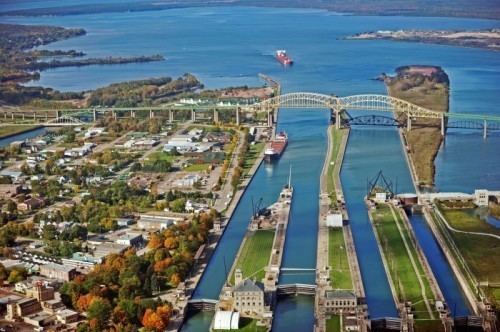 | ||
Location Sault Ste. Marie, Michigan Similar St Marys River, Sault Ste Marie Internatio, Point Iroquois Light, Mackinac Bridge, Whitefish Point Light | ||
Ship through the soo locks in hd 6 9 09
The Soo Locks (sometimes spelled Sault Locks, but pronounced "soo") are a set of parallel locks which enable ships to travel between Lake Superior and the lower Great Lakes. They are located on the St. Marys River between Lake Superior and Lake Huron, between the Upper Peninsula of the US state of Michigan and the Canadian province of Ontario. They bypass the rapids of the river, where the water falls 21 feet (6.4 m).
Contents
- Ship through the soo locks in hd 6 9 09
- Soo locks
- United States locks
- Engineers Day
- Canadian lock
- References
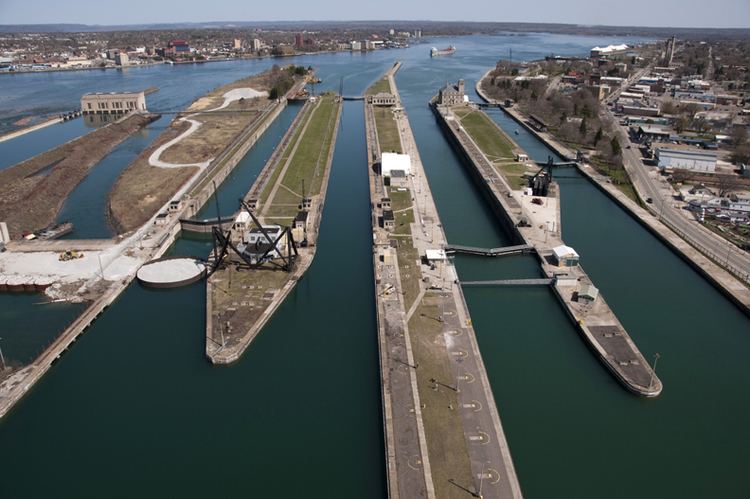
The locks pass an average of 10,000 ships per year, despite being closed during the winter from January through March, when ice shuts down shipping on the Great Lakes. The winter closure period is used to inspect and maintain the locks.
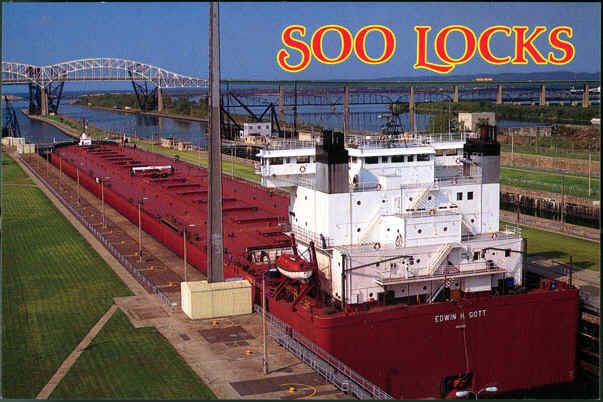
The locks share a name (usually shortened and anglicized as Soo) with the two cities named Sault Ste. Marie, in Ontario and in Michigan, located on either side of the St. Marys River. The Sault Ste. Marie International Bridge between the United States and Canada permits vehicular traffic to pass over the locks. A railroad bridge crosses the St. Marys River just upstream of the highway bridge.

Soo locks
United States locks

The U.S. locks form part of a 1.6-mile (2.6 km) canal formally named the St. Marys Falls Canal. The entire canal, including the locks, is owned and maintained by the United States Army Corps of Engineers, which provides free passage. The first iteration of the U.S. Soo Locks was completed in May 1855; it was operated by the State of Michigan until transferred to the U.S. Army in 1881.
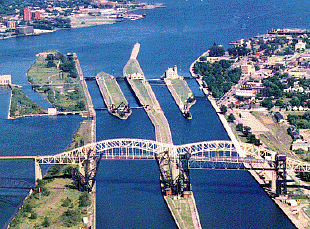
The current configuration consists of four parallel lock chambers, each running east to west; starting at the Michigan shoreline and moving north toward Ontario, these are:
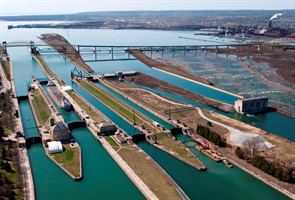
The Davis and Sabin locks have been slated for replacement since 1986 with a new 'Super-Lock', which would provide a second lock capable of accommodating the "lakers". Groundbreaking for the new lock project was held on June 30, 2009, although the bulk of the funding necessary to complete the project has not yet been appropriated by Congress. This construction will further limit usage of the Davis Lock.
North of the Sabin Lock is an additional channel with a small hydroelectric plant, which provides electricity for the lock complex.
Engineers Day
On the last Friday of every June, the public is allowed to go behind the security fence and cross the lock gates of the U.S. Soo Locks for the annual Engineers Day Open House. During this event, visitors are able to get close enough to touch ships passing through the two regularly operating locks.
Canadian lock
A single small lock is currently operated on the Canadian side of the Soo. Opened in 1998, it was built within a damaged older lock, and is 77 meters (253 ft) long, 15.4 meters (51 ft) wide and 13.5 meters (44 ft) deep. The Canadian lock is used for recreational and tour boats; major shipping traffic uses the U.S. locks.
